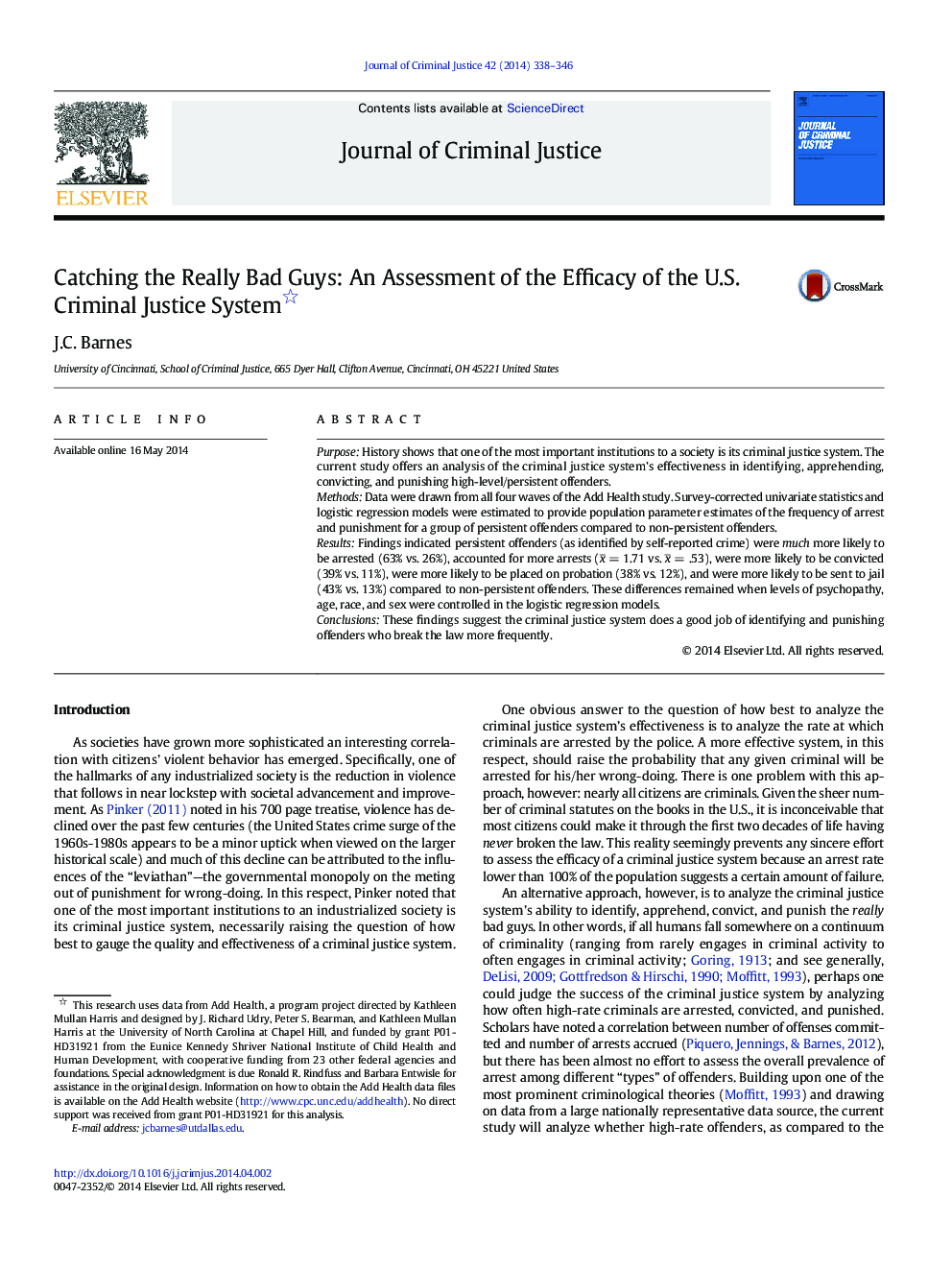| کد مقاله | کد نشریه | سال انتشار | مقاله انگلیسی | نسخه تمام متن |
|---|---|---|---|---|
| 882673 | 912012 | 2014 | 9 صفحه PDF | دانلود رایگان |
• The efficacy of the criminal justice (CJ) system is important to assess
• One approach is to analyze the system’s ability to identify persistent offenders (PO)
• Drawing on nationally representative data, this study performed such an analysis
• Results show the CJ system does a good job of identifying/punishing POs
• POs reported more arrests, convictions, probation, and jail time than non-POs
PurposeHistory shows that one of the most important institutions to a society is its criminal justice system. The current study offers an analysis of the criminal justice system’s effectiveness in identifying, apprehending, convicting, and punishing high-level/persistent offenders.MethodsData were drawn from all four waves of the Add Health study. Survey-corrected univariate statistics and logistic regression models were estimated to provide population parameter estimates of the frequency of arrest and punishment for a group of persistent offenders compared to non-persistent offenders.ResultsFindings indicated persistent offenders (as identified by self-reported crime) were much more likely to be arrested (63% vs. 26%), accounted for more arrests (x¯ = 1.71 vs. x¯ = .53), were more likely to be convicted (39% vs. 11%), were more likely to be placed on probation (38% vs. 12%), and were more likely to be sent to jail (43% vs. 13%) compared to non-persistent offenders. These differences remained when levels of psychopathy, age, race, and sex were controlled in the logistic regression models.ConclusionsThese findings suggest the criminal justice system does a good job of identifying and punishing offenders who break the law more frequently.
Journal: Journal of Criminal Justice - Volume 42, Issue 4, July–August 2014, Pages 338–346
